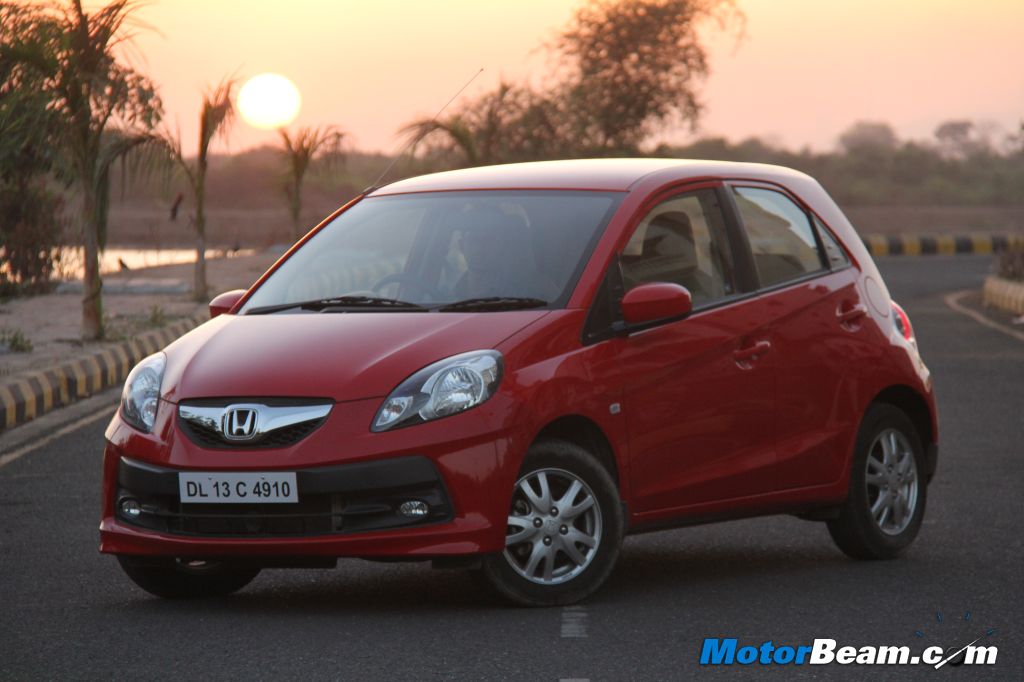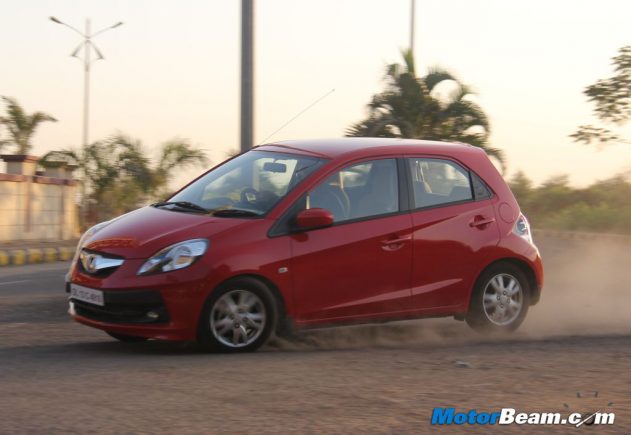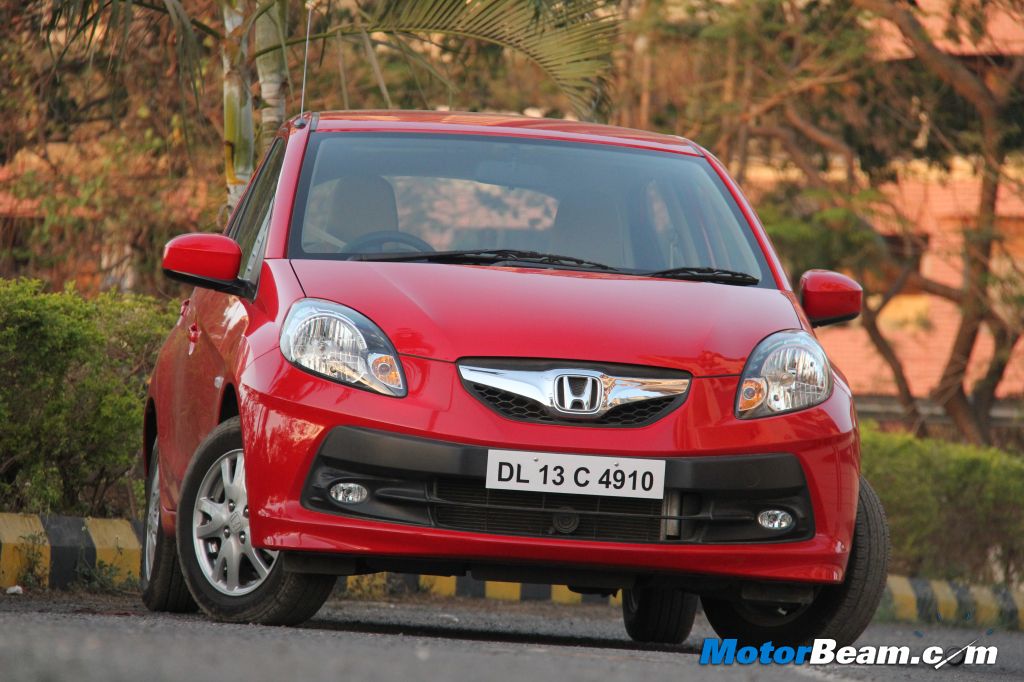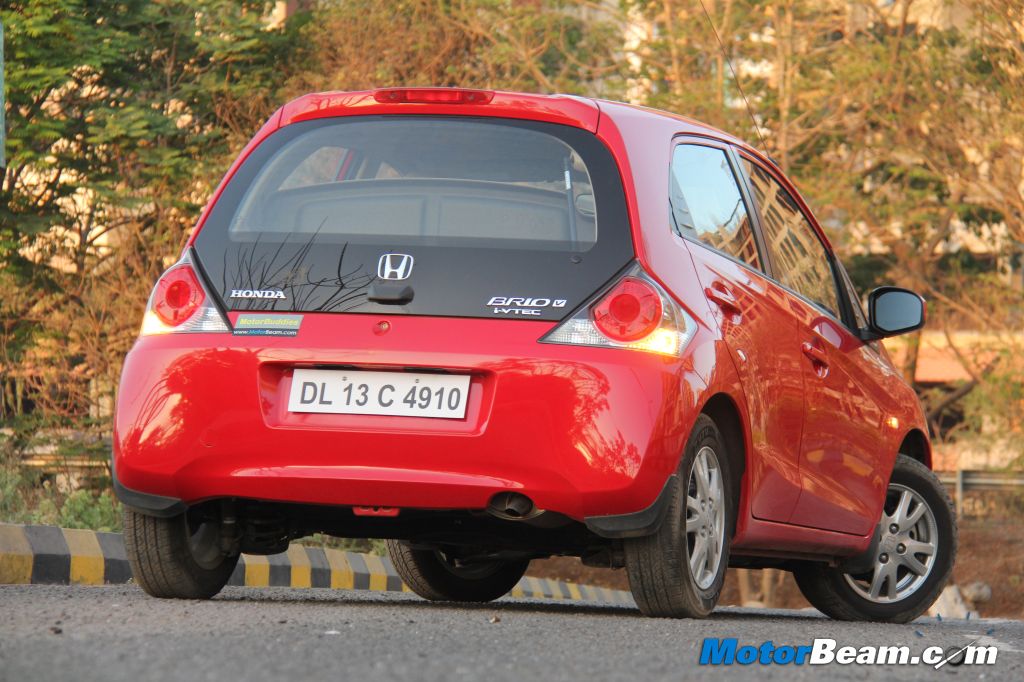
Honda Brio Long Term Review
Car Tested: Honda Brio V AT
Kms Done: 1569 kms
Test Started at: 1391 kms
Test Concluded at: 2960 kms
Mileage: 10.12 km/l (mostly city running), 12.69 km/l (best), 7.75 km/l (worst)
Major Repair: None
Service Cost: None during the test
The Brio has been Honda’s serious and successful attempt in getting into the small sized hatchback segment. The Brio was made specifically for the Asian markets keeping in mind Honda’s new philosophy of providing quality products to the consumer at affordable prices. The Honda Brio clearly shows the company’s intention to cater to the volume market. Honda has established itself in India so well, people almost swear by its quality. So does the Brio live upto the Honda name and is the new Automatic any good. We drive the new Honda Brio Automatic on a long term stint on crowded Mumbai roads and find out.
[flickr size=”center” float=”medium”]http://www.flickr.com/photos/motorbeam/9034919382/[/flickr]
The perception to automatics is slowly and steadily changing. The market has grown to 6 percent lately and consumer preferences, especially in the metros tips in favour of automatics. Not only is it comfortable but also very convenient to use if you encounter traffic on a daily basis. The Brio is the most advanced automatic car in its segment. The only one to sport a five speed transmission, it is practically more fuel efficient than the 4-speed units running in the competition.
Don’t be fooled by its small and cute looks. Honda has packaged the Brio very cleverly indeed. The compact dimensions make it extremely easy to maneuver around the city and it fits comfortably into the tightest parking spots. The rear visibility is fantastic with the full glass boot lid giving great visibility in the rear view mirror and while reversing.
The key to roomy interiors is the compact engine bay. Maximum space has been utilized in the cabin and thus legroom, head room and knee room is adequate in both the rows, however tall passengers will find the under thigh support wanting, especially after long drives. The integrated front headrests are average but the rear ones could have been better.
[flickr size=”center” float=”medium”]http://www.flickr.com/photos/motorbeam/9034904426/[/flickr]
The boot space is average for this sized car but the parcel shelf makes the loading area too narrow for big bags. You also need to drop the rear seat to fit suitcases which may be hindrance to rear passengers. However, the boot is decently big for routine runabouts and can easily swallow your weekend shopping bags. Most people are apprehensive about the all glass boot. We can tell you for sure that this toughened glass lid is meant to last. After subjecting it to heavy abuse through our drive, it stayed put fantastically. The downside is that it does not allow a rear wiper assembly to fit in and thats the reason why the Honda Brio is offered without a rear wiper. Defogger is present though.
[flickr size=”center” float=”medium”]http://www.flickr.com/photos/motorbeam/9032688321/[/flickr]
The AC works well and inspite of the large glass area, it cools effectively. The audio system boasts of decent sound quality with the convenience of USB/AUX and iPod connectivity. Audio controls on the steering wheel work well. The interior quality is pretty good for a car of this price and size, everything is well put together. No rattles or creaks at all from any part of the the vehicle.
[flickr size=”center” float=”medium”]http://www.flickr.com/photos/motorbeam/9034894462/[/flickr]
The Jazz derived 1.2-litre i-VTEC engine delivers the same power and torque figures as the manual variant i.e. 88 PS at 6000 RPM and 109 NM at 4500 RPM. The 5-speed automatic transmission consists of a single clutch hence there is a lag when you want to floor the accelerator and upshift in a hurry but the ratios are well suited for city driving with a taller fifth gear for highway sprints. We used the ‘D’ mode maximum throughout the drive. One can also shift to ‘D3’ when you need power quickly such as while overtaking. The ‘2’ and ‘1’ gears were seldom used but they do come in handy while negotiating steep slopes. The convenience of the automatic in city driving is simply phenomenal and addictive too.
[flickr size=”center” float=”medium”]http://www.flickr.com/photos/motorbeam/9032671869/[/flickr]
We completed 1569 kms in the Brio driving mainly in the city. In this driving cycle the Brio returned an average fuel efficiency of 10.12 km/l. The best mileage we got was 12.69 km/l while driving with a light foot. Feed the throttle gently and you will slowly get the hang of getting the cogs to work more efficiently thereby boosting the mileage of the vehicle. Flooring the pedal to the metal, the Brio AT returned 7.75 km/l, which happened to be the minimum we got. The Eco Lamp helps the driver to adjust his driving style to derive maximum efficiency from this machine.
[flickr size=”center” float=”medium”]http://www.flickr.com/photos/motorbeam/9034921760/[/flickr]
Ride quality is something Honda is known for and the Brio is no different. Composed ride and brilliant high speed stability means you can push the car around twisties with some confidence however, the steering does not feel well weighed at high speeds. Get into the city and the Brio is in a league of its own. Light steering and the autobox means minimum stress while negotiating through thick traffic. The Honda Brio AT’s turning radius is marginally more at 4.7 meters as compared to 4.5 meters of the manual but practically speaking, you wouldn’t be able to tell. This has been done to accommodate the automatic gearbox, which is longer than its manual counterpart. Braking performance is decent and we did not face any problem on that front. NVH levels are good and this petrol motor is superbly refined. You can hardly tell if the car is idling.
[flickr size=”center” float=”medium”]http://www.flickr.com/photos/motorbeam/9034904970/[/flickr]
The service costs of the Honda Brio Automatic are nearly the same as the manual except the transmission oil part which needs to be changed at 40,000 kms for the first time as compared to the manual which is changed at 60,000 kms. After this the oil change schedule, the schedule is the same for both variants (every 60,000 kms). The cost of spares are service are appended below.
Honda Brio Service Schedule (MT and AT) –
* 1st Service – 1 month or 1000 kms whichever comes first
* 2nd Service – 6 months or 10,000 kms whichever comes first
* Thereafter every six months or the next 10,000 kms (which ever comes first)
Honda Brio Cost of Service
The Honda Brio Automatic makes a whole lot of sense in crowded metro cities. It is more expensive than the manual version by a good Rs. 92,000/-. At this price difference you get a car which is perfect for city running and is more fuel efficient than its competitors. Besides the stress free driving experience, it is definitely a great package for those who keep comfort and convenience on top priority.
[flickr size=”center” float=”medium”]http://www.flickr.com/photos/motorbeam/9034896596/[/flickr]







